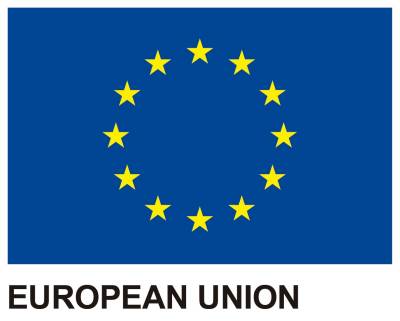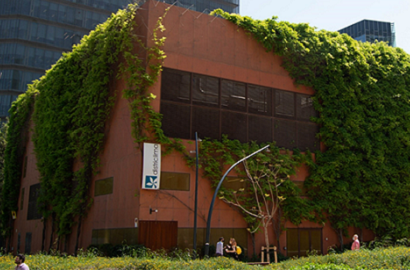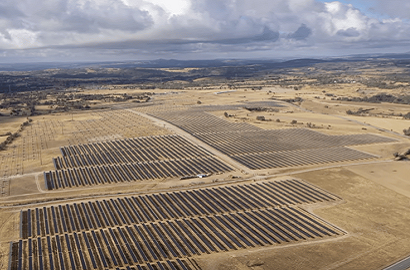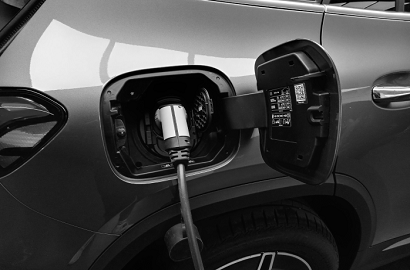Cepsa promotes largest European green hydrogen project in Andalusia
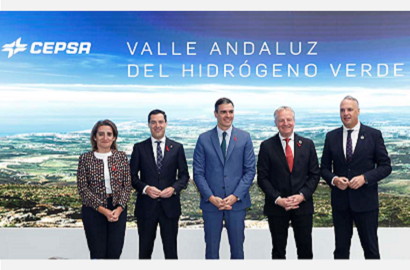
It will invest 5 billion euros in its plants in Cadiz and Huelva and create 10,000 new jobs
Cepsa has presented an ambitious plan to build two new green hydrogen production plants in its energy parks in Campo de Gibraltar (Cadiz) and La Rábida (Huelva). The Andalusian Green Hydrogen Valley is the largest project focused on this energy source to have been announced so far in Europe. When it starts operations, 50% of the green hydrogen production target set by the government for 2030 will be reached.
The project requires an investment of 3 billion euros in two plants, which will add a capacity of two gigawatts and produce up to 300,000 tonnes of green hydrogen per year. A further 2 billion euros will be added to this investment across a portfolio of projects that will provide the plants with three gigawatts of solar and wind energy capacity and produce the energy necessary for its operation. All this will be accompanied by the creation of 1,000 direct jobs and some 9,000 indirect and induced jobs.
Europe's energy independence
Cepsa – owned by the Mubadala Investment Company fund – will make Andalusia the largest green hydrogen hub in Europe. The objective is part of the company's strategic plan up until 2030, whereby it intends to be carbon neutral and contribute to European energy independence and security of supply, in line with the EU's REPowerEU strategy.
With a capacity of one gigawatt each, the hydrogen plants in San Roque (Cadiz) and Palos de la Frontera (Huelva) are the two largest of this energy type projected in the whole of Europe. The Huelva plant will enter operation first – in 2026 – and it will reach its maximum capacity two years later. The Cadiz plant will start up in 2027.
Net exporter
The International Renewable Energy Agency (IRENA) has calculated that the production of green hydrogen will be cheaper than grey hydrogen in Spain from 2026. Based on this outlook, Spain will become a net exporter of this energy source. In fact, 20% of projects announced are currently located in Spain.
The Andalusian Green Hydrogen Valley will serve to decarbonise Cepsa's energy parks. Six million tonnes of carbon dioxide – in addition to other gases and particles – will no longer be emitted into the atmosphere. The company will use the hydrogen to produce advanced biofuels for aviation (SAF) and large-scale sea and land transport. It will also be used to manufacture other derivatives, such as green ammonia and methanol, which are used in maritime transport.
Industrial fabric and port infrastructure
Choosing Andalusia for this project is explained by its industrial fabric, and because 40% of the hydrogen produced in Spain is consumed in the region. In addition, the production cost of the solar and wind energy that complement it is one of the lowest in Europe, and it has one of the largest generation and production capacities. It is also noted for its port infrastructure, with Algeciras and Huelva being major ports for export on international shipping routes, both to northern Europe and to Asia and Africa.
The energy company has reached an agreement with the port of Rotterdam to implement the first green hydrogen corridor between northern and southern Europe. According to its estimates, the project will enhance the activity of over four hundred local SMEs and will attract new industries into this energy source's value chain, such as electrolyser factories, green fertiliser plants and hydrogen transport technology.
Energy transition
During the presentation held in San Roque, the CEO of Cepsa, Maarten Wetselaar, explained that, “The Andalusian Green Hydrogen Valley is a pioneering project that, with a capacity of two gigawatts, makes this, by a factor of ten, the largest project started in Europe to date. This large-scale production will be a key contribution to the continent's energy transition and security of supply, producing sustainable energy in Europe and for Europe".
The President of the Government, Pedro Sánchez, said that Andalusia "meets all the conditions to be one of the most competitive regions in the world for hydrogen production", and added, "This investment will help Spain achieve its goal of becoming an energy exporter, through the first European green hydrogen corridor between Campo de Gibraltar and the Dutch port of Rotterdam".
Also in attendance at the presentation was the president of the Andalusian Regional Government, Juan Manuel Moreno Bonilla, who stated, “Andalusia has the leadership, position and strength to be at the forefront in generating and exporting green hydrogen. Public-private partnership can strengthen our position in the production of the clean energy that is green hydrogen. This is why we are working to establish an Andalusian green hydrogen alliance involving the government and all interested parties".
Photo: Cepsa

